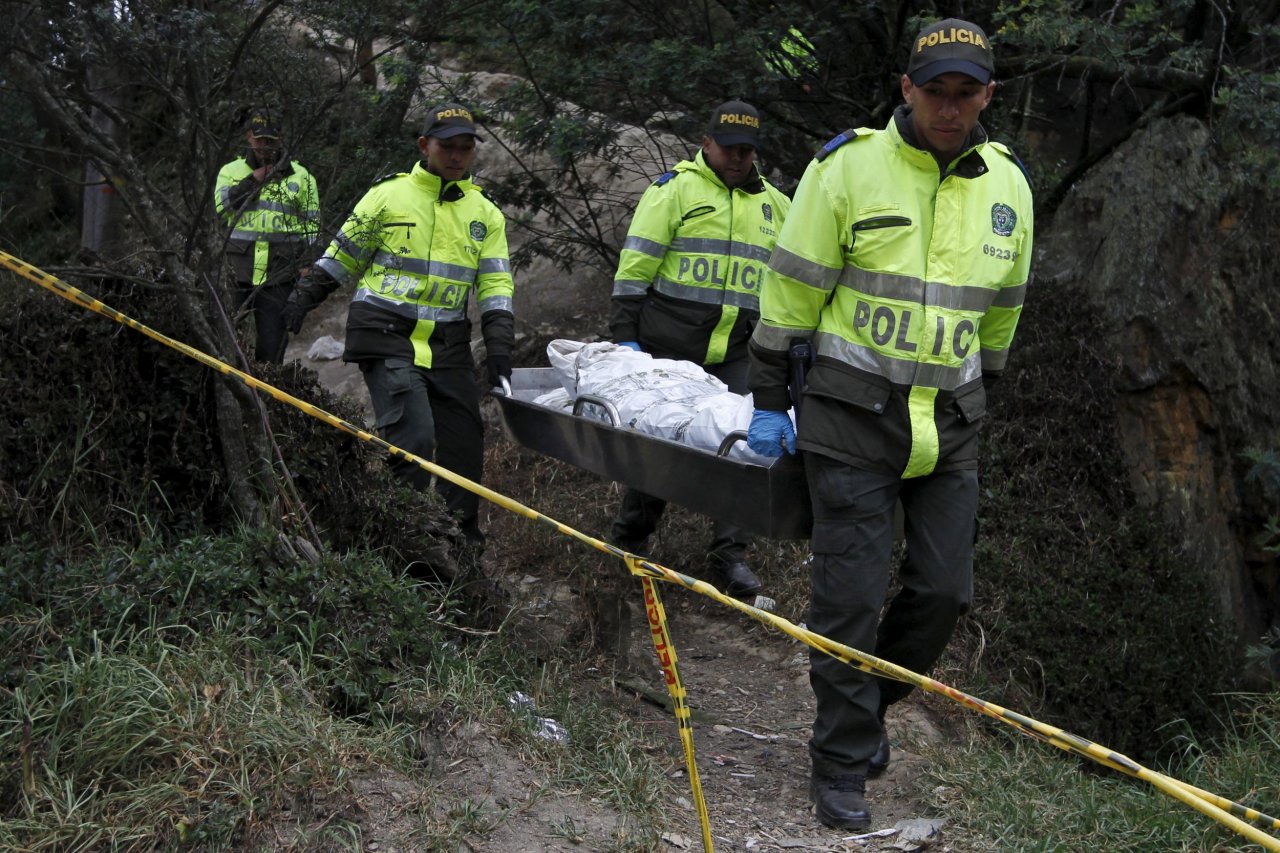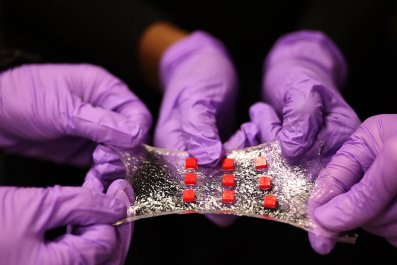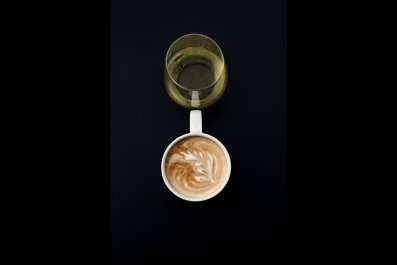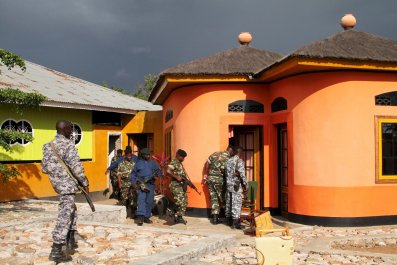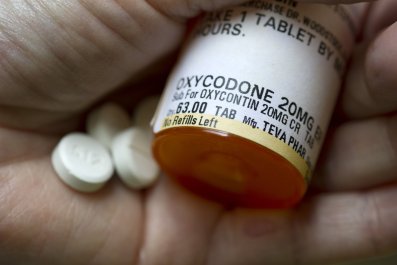On a Tuesday evening in July 2013, a woman in her 50s was found bound, gagged, stabbed to death and wrapped in a carpet in the driveway of her Honolulu home. The woman's ex-husband hadn't heard from her since the two had dinner the Saturday before, and he grew worried, so he went over to her house. No one answered the door and her car was missing, so he flagged down a security guard from a building next door. They investigated and quickly noticed a foul odor emanating from around the back of the house. The police were called in and they soon discovered the decaying body, rolled up in a moldy rug tucked away out of view in the driveway. Then they started piecing together evidence about her murder.
In cases like this, in which the body is found in some state of decomposition, one of the key mysteries is the time line of the crime. Investigators may look at cellphone records to see when the deceased sent her last text message. Or ask colleagues when she left work. They might measure the corpse's temperature to see how much it has cooled or examine insect infestations in a body found in a shallow grave. But these methods can't be used in all homicide scenarios, and all have flaws. A body's temperature, for instance, will cool differently depending on if it's been left in a sunlit room or submerged in cold water. And the more days that elapse between when someone dies and the body is found, the more difficult deciphering the time of death becomes.
"A lot of estimates for time of death really aren't scientific at all," says David Carter, an associate professor of forensic science at Chaminade University of Honolulu. For most deaths that's fine, because they're natural, the result of aging or illness. With homicides, though, that detail can be critical, as detectives use it to determine a timeline of the crime and validate alibis. Investigators may soon have a much better—and more scientific—tool at their disposal to help with all that: the "microbial clock."
Microbes—single-cell organisms, including bacteria and fungi—are among the most numerous and diverse organisms on earth, with many more kinds than there are plants, vertebrates and insects combined. Lots of them live on humans: Each person carries an estimated 100 trillion microbes, mainly on our skin and in our saliva, and inside our gastrointestinal tract, ears, nose and mouth. Since more advanced technology for genetic sequencing became available about a decade ago, the human microbiota has been the subject du jour for evolutionary biologists. Researchers have found that microbes play a major role in our health—in cancer, allergies, autoimmune disorders and even moods.
But Jessica Metcalf, an evolutionary biologist and senior research associate at the University of Colorado Boulder, decided to turn her attention elsewhere: She wanted to find out what happens to the human microbiome after its host dies. And it turns out the communities of microbes on every human corpse change during decomposition in a predictable succession, according to a paper written by Metcalf and a team of researchers, and published December 10 in the online issue of Science. Carter, a co-author of the study, says microbes offer the most promising method for establishing time of death that he's seen, since it's entirely independent of the external world. "They're already there. They're already on you and already in you."
An undisturbed body goes through five stages of decomposition: When a person dies, their immune system stops and bacteria within the body begin to change, while microbes from the surrounding environment, like fungi and microscopic worms, begin to invade the corpse. That's the "fresh" stage. Second is the "bloat" stage, when intestinal bacteria spread and produce gases that cause inflation. Third is "active" decay, when a rupture event forces the body's orifices to leak and anaerobic organisms become oxygenated, causing major changes in microbes. During the fourth stage, "advanced decay," most of the soft tissues have decomposed and just bones, cartilage and hair are left behind. Finally, in the fifth "dry/remains" stage, pretty much only the skeleton persists.
Metcalf and her colleagues (24 of them, representing 11 institutions) wanted to see if by tracking microbial changes during the decomposition process, they could accurately estimate time of death. The team gathered 120 dead mice in a lab, placing 40 each on three soil types: desert, subalpine forest and short-grass prairie. They sampled the skin and abdominal cavity of the mice, as well as the soil beneath their bodies, and used genetic sequencing to identify all the different types of microbes in each sample. They repeated this throughout 71 days of decomposition, allowing them to track the presence and abundance of microbes. After cataloging these changes across all the mice, the scientists were able to create a "clock"—a model for estimating how long a mammal had been dead. In addition, they found that the different soil types used with the mice didn't matter in terms of the microbial communities that developed.
Simultaneously, they ran an experiment at the Southeast Texas Applied Forensic Science Facility in Huntsville, which houses a "body farm" where people donate their bodies to science after they die. Two human bodies were placed outside in the winter for 143 days and two more in the spring for 82 days, and subjected to rain, insects, vultures and maggots. The researchers swabbed the skin and soil underneath the bodies for samples of microbes—and found that the uncontrollable variables of the outdoors human experiment didn't impact the expected patterns of microbial changes during decomposition.
For now, they're able to track the changes in the microbes of a corpse (and soil beneath) to predict the time of death within roughly two days—even after the bodies had been decomposing for 25 days. The team plans to whittle the microbial clock down to the scale of hours, but perhaps, Carter says, what's most exciting about the microbial clock is how it encompasses spatial evidence—information on where people and objects have been—and temporal evidence, information about when things happened. Rarely do detectives obtain both types of physical evidence. Take a fingerprint: "We don't have any way to age that fingerprint," Carter says. "All we know is it was left at some point in the past; same with blood evidence." But the microbial clock could be used to determine both how long a person has been dead, and the original location of a moved corpse—a decomposing body substantially alters the soil's microbial communities, leaving a distinct clue behind.
Some pretty big hurdles remain before the courts would allow a microbial clock to be entered as evidence. As a new scientific method, it would need to undergo an admissibility hearing outside the presence of a jury—called a Kelly-Frye hearing—to show that the method is established within the scientific community. Expert witnesses would be called by the public prosecutor to provide this opinion, which the defense could refute. "This is the same legal process that DNA evidence was originally subjected to before being admitted as evidence in criminal cases," says Patrick McGrath, president of the California District Attorneys Association. "Of course, it has now become commonplace." With every evolution in DNA analysis, the new procedure must go through the same process.
If an attorney wins the Kelly-Frye hearing and the court allows the method to be introduced, a jury still needs to be convinced of its accuracy and reliability, and that the scientific procedure was correctly used—more factors for the opposing side to attempt to discredit. That's what happened with the use of DNA evidence in the O.J. Simpson homicide trial in 1995; the prosecution believed it had an abundance of evidence tying Simpson to the murder of his ex-wife Nicole Brown Simpson and her friend Ron Goldman at her home in Los Angeles. They obtained, for instance, DNA analysis of blood identified as Nicole's on a sock in Simpson's bedroom. Blood from both Nicole and Goldman was discovered in Simpson's white Bronco. There was also a glove found outside Nicole's home with a mixture of blood that came from her, Goldman and Simpson. But the defense convinced jurors to distrust this evidence by criticizing how it had been collected and processed. And the prosecution failed to present the relatively new DNA method in a way jurors could easily understand.
To use the microbial clock, crime scene investigators would also need to be trained and laboratory criminalists would need to develop experience analyzing the material. Making the leap from controlled experiment to real-world application isn't going to be easy. In the meantime, Metcalf and her colleagues will kick off another project, funded by the National Institute of Justice, in early 2016 that involves daily sampling of human corpses at three different "body farms" in the U.S across all four seasons.



